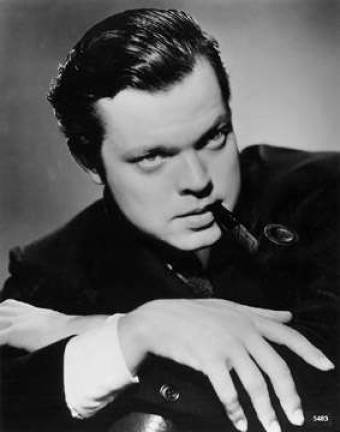Movies in Search of an Author

A new series at the Anthology Film Archives explores the role of the screenwriter in the history of film.
Plays have playwrights, TV series have creators, and movies have directors. It's a structure of artistic credit that seems to come naturally, even though it hides the group driven nature of each art. One particular consequence of the director's reign in Hollywood has been a source of griping and conflict for decades and is now the inspiration for a new series at Anthology Film Archives: the unjust anonymity of the screenwriter, titled "From the Pen Of."
"From a programming standpoint, it's always a pleasure to unearthunder-appreciatedartists," says Jed Rapfogel, Film Programmer at Anthology Film Archives and co-programmer of the new series. "Thanks to the neglect they've traditionally suffered, focusing on screenwriters reveals a whole host of such figures."
The first program in the series screens John Sayles' early work as a writer on other director's projects, as well as some of Sayles' own favorite screenplays. The next installment, happening in June, will focus on various writers, but the idea of the series as a whole, Rapfogel says, will be to "detect the through-line, the shared themes and sensibility, behind a particular screenwriter's different films."
The degree of focus afforded to directors over screenwriters is in large part a product of the 1960's. It was then that Andrew Sarris, film critic for the Village Voice, began exposing an American audience to the auteur theory. As espoused by French critics like André Bazin, Jean-Luc Godard, and François Truffaut (though Bazin later distanced himself from it), the auteur theory sought to bring artistic credibility to filmmaking by showing directors to be the true artists.
The most famous criticism of the auteur theory is Pauline Kael's, who railed against Sarris in her 1963 piece, "Circles and Squares" and then, in 1971's Raising Kane, argued that Herman J. Mankiewicz deserved credit for writing the whole of Citizen Kane. Orson Welles, Kael argued, had wanted sole writing credit in order to boost the impression that every aspect of the film was his creation, an impression that later critics bought in full. Really, Kael wrote, Welles didn't even deserve the shared credit he ultimately got.
Kael's argument was seriously challenged by other film scholars and, according to a recent biography, based on ethically suspicious actions, but the spirit of her attacks continued to carry weight. In 1974, Richard Corliss published Talking Pictures, in which he systematically went through dozens of both famous and lesser-known screenwriters and illustrated the value of looking at their extensive, often quite varied body of work. Critic David Kipen produced a far less meticulous extension of Corliss' work in 2006, a small manifesto whose title tried to give the pro-screenwriter camp a name: The Schreiber Theory, schreiber being Yiddish for writer
But perhaps the most symbolic indications of the screenwriter's lesser status have been the Writer's Guild of America strikes, which went on for 21 weeks in 1988 and 14 in 2008. It was the 1988WGAstrike that partially inspired Joan Didion's essay, "Los Angeles Days," a piece that goes a long way to expressing the particular kind of esteem in which Hollywood holds its writers.
The task of producing a screenplay, Didion writes, "is seen as narrow and technical, one colors in the larger vision, a matter of taking notes from a producer or an actor or a director, and adding dialogue ? something, it is understood, that the producer or actor or director could do without a writer, if only he or she had the time, if only he or she were not required to keep that larger vision in focus."
The basic dichotomy of screenwriter vs. director (or screenwriter vs. the world) is certainly gripping drama, but also quite clearly a simplified battleground. Corliss worked to give screenwriters the same spotlight as directors, but also knew the limit of doing so. "The films that receive the highest praise in this book," he notes in the introduction to Talking Pictures, "are those whose writers and directors ? in creative association with the actors and technicians ? worked together toward a collaborative vision." And while Kael certainly relished taking Welles off his pedestal as the sole creator of Citizen Kane, she equally gave him his due as a director and actor.
"From the Pen Of" is also not trying to present a simplistic black and white story. "I tend to identify more or less as an auteurist," Rapfogel says. "In a certain sense these programs are kind of a displacement of an auteurist approach ? we're suggesting that certain screenwriters qualify at least to some extent as auteurs themselves." To shift the focus away from the director does not necessarily mean turning toward the screenwriter as sole hero. Instead, Rapfogel says, the point is "to acknowledge that cinema is a collaborative art form."
Such a collaborative take on film can be seen today in something like Manohla Dargis' review of Safe House, where she goes as far as to cite the editor's former body of work as relevant to the success of the film. Everyone brings a skill set. Everyone makes a contribution. This ought to be our goal: to be able to appreciate a film by noting how various people's styles meld together into a final product. But to do so probably will require us to name a screenwriter other than Charlie Kaufmann. And so the battle continues, though hopefully in a more temperate, civilized tone.
"From the Pen Of: John Sayles" opened Feb. 23 and runs until March 1 at the Anthology Film Archives. 32 Second AvenueNew York, NY 10003